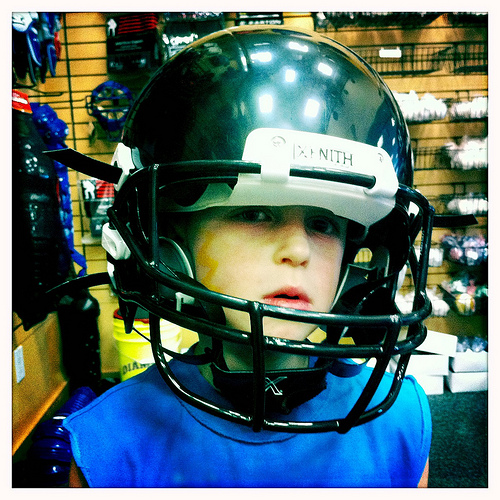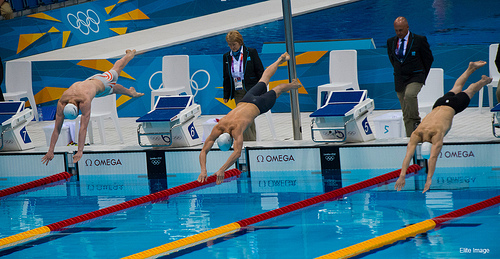Just as technology has changed the worlds of work and leisure, they have also changed the wide world of sports.
Here are some advances which have made athletics more accessible to people worldwide than ever before.
Stronger, Lighter Materials

Image via Flickr by Rady One
Newer, lighter, stronger materials have improved athlete’s performance. For example, the competitive tennis racket made of combinations of graphic, titanium, and carbon fiber have helped change the sport since they were first introduced in the 1980s.
Combining these lighter, stronger materials with advanced engineering has also changed the worlds of bicycle racing, skiing, ice skating, golf, tobogganing, surfing, and sailing.
Measuring Speed and Distance

Image via Flickr by SeeMidTN.com
Judging fast-paced games, including the fastballs thrown by pitchers, are more accurately measured by new variations of radar guns. They not only track speed, but produce an image of where the ball landed.
Micro-transmitters, such as RDIF tags, are used in soccer, rugby and football to track a players’ speed, place, motion, and force of impact. These devices have eliminated the guess-work about the ball being outside the strike zone or even the need for an instant replay.
Social Media and Sports

Image via Flickr from Arranfrood
Technology has helped fans just as much as it has athletes. Fans can now buy tickets easier, follow their favorite athletes on Twitter and Facebook, and post notes on sports boards and radio stations. You can find your favorite team’s tickets, like Cleveland Browns Tickets, online and with your mobile device quickly and easily.
Athletes, too, have benefitted. They can also make extra money in the process from ringtones, and by posting messages on team or personal web sites.
Making Sports Safer

Image via Flickr by Clappstar
While technology is often heralded as a great advancement, sometimes it has to be curtailed to keep it safe. Take the case of aluminum bats. These bats are lighter and stronger than traditional wood bats made of ash and hickory.
But aluminum bats pack a powerful wallop, which can hurt little leaguers and college athletes. To cut the punch of aluminum bats, new regulations designed to curtail the “batted ball coefficient of restitution,” are now being applied by bat manufacturers to make the aluminum bats act more like their wood counterparts.
Improved Athletic Wear

Image via Flickr by Atos International
Not only are athletes better trained and using better equipment, they are also wearing more suitable attire.
Lighter, more streamlined fabrics have created improved personal sports clothing, and shoes. These clothes are usually lighter and stronger and have special characteristics. For example, improved swimming suits played a role in a recent Olympic decision to consider the impact of full body suits in competition. These suits helped some swimmers cut critical fractions of a second off of their times.
Better Sports Management

Image via Flickr by KaylynStar
The computer itself has also made it easier and more efficient to manage complex, large-scale events. By using relational databases, event managers and coaches can compare many independent variables, such as team results, individual athletes, officiates, sports venues, weather, and availability to match data from one table with other data to produce a new table or report. The result, is data that can make planning an event more efficient and easier to organize for fans and athletes alike.
What’s your favorite technological sports improvement?











Leave a Reply